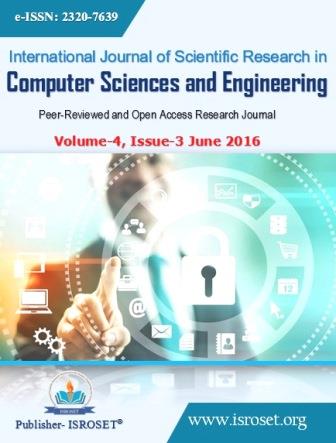An Efficient Approach for Secure Data Aggregation Method in Wireless Sensor Networks with the impact of Collusion Attacks
Keywords:
Wireless Sensor Networks, Network Lifetime, Collision attack, Data Aggregation techniquesAbstract
The basic component in wireless sensor networks (WSNs) is represented by the nodes. The sensor node consumes energy during sensing, processing and transmission. The aggregation of data from multiple sensor nodes which is done at the aggregating node is to be performed by simple method such as averaging. In Wireless sensor network power and energy resources are limited. In this paper the monitoring system and READA technique will be used. The number of sensor nodes can detect simultaneously a single target of interest. Redundant and correlated data are collected. If every node sends data to the base station, energy will be wasted and due to that the network energy will be consume quickly. Redundancy Elimination for Accurate Data Aggregation (READA) uses a grouping and compression mechanism to remove duplicate data in the aggregated set of data to be sent to the base station without losing large accuracy of the final aggregated data. In wireless sensor network, security and energy efficiency issues are found.
References
P. saini, M. Sharma, "Impact of Multimedia Traffic on Routing Protocols in MANET", IJSR in Network Security and Communication, Vol.3, Issue.3, pp.1-5, 2015,
L. Pal, P. Sharma, N. Kaurav, S.L. Mewada, "Performance Analysis of Reactive and Proactive Routing Protocols for Mobile Ad-hoc –Networks", International Journal of Scientific Research in Network Security and Communication, Vol.1, Issue.5, pp.1-4,2013.
R. Nathiya, S.G. Santhi, "Energy Efficient Routing with Mobile Collector in Wireless Sensor Networks (WSNs)", International Journal of Computer Sciences and Engineering, Vol.2, Issue.2, pp.36-43, 2014.
H. Singh, "Randomly Generated Algorithms and Dynamic Connections", International Journal of Scientific Research in Network Security and Communication, Vol.2, Issue.1, pp.1-4, 2014.
O. Hiteshreddy, P. Singh, S. Chahuan, "A Review on Cluster Based Data Aggregation Protocols in Wireless Sensor Network", International Journal of Computer Sciences and Engineering, Vol.3, Issue.8, pp.37-45, 2015.
D. Tamrakar, S. Bhattacharya, S. Jain, "A Scheme to Eliminate Redundant Rebroadcast and Reduce Transmission Delay Using Binary Exponential Algorithm in Ad-Hoc Wireless Networks", International Journal of Scientific Research in Network Security and Communication, Vol.2, Issue.2, 1-5, 2014.
Md.A. Mushtaque, "Comparative Analysis on Different parameters of Encryption Algorithms for Information Security", International Journal of Computer Sciences and Engineering, Vol.2, Issue.4, pp.76-82, 2014.
Y. Yorozu, M. Hirano, K. Oka, and Y. Tagawa, “Electron spectroscopy studies on magneto-optical media and plastic substrate interface,” IEEE Translation Journal on Magnetics in Japan, Vol. 2, Issue.8, pp.740–741, 1987.
R. Sharma, Heena Das, S.N. Das, "WSN for Computerized Irrigation System in Tea Gardens", International Journal of Scientific Research in Computer Science and Engineering, Vol.4, Issue.2, pp.26-30, 2016.
Downloads
Published
How to Cite
Issue
Section
License

This work is licensed under a Creative Commons Attribution 4.0 International License.
Authors contributing to this journal agree to publish their articles under the Creative Commons Attribution 4.0 International License, allowing third parties to share their work (copy, distribute, transmit) and to adapt it, under the condition that the authors are given credit and that in the event of reuse or distribution, the terms of this license are made clear.







